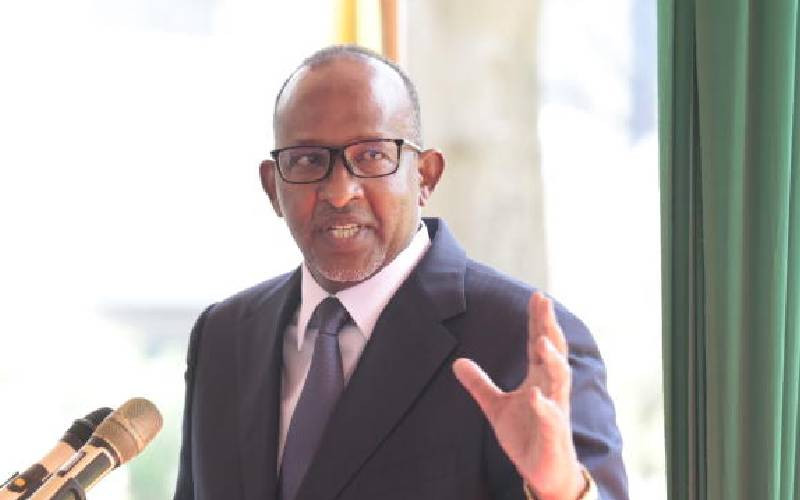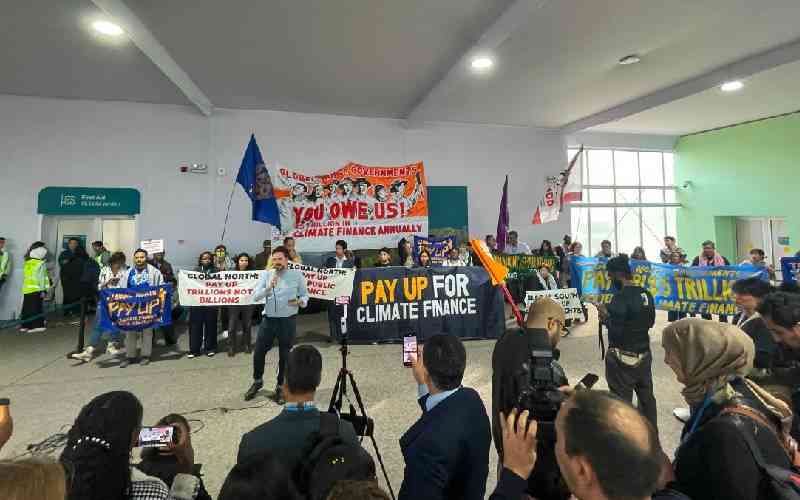
As the country is situated within the tropics, we have plentiful sunlight, making solar power a critical resource. Our abundance of geothermal energy is powered by heat from the earth’s crust, while hydropower opportunities are determined by climatic and hydrological conditions. There are many locations in Kenya where wind speeds are optimal for power generation – but wind cuts both ways. Unfortunately, wind that is too strong is not conducive to power generation, as it may spin turbines too fast and damage them.
Geothermal power is essential in Kenya and is, indeed, the dominant source of baseload power. This is because by its nature it is able to supply ‘firm power’, meaning that the supply is both adequate and stable enough to be relied on.
The most important factor driving the transition is that people around the world have come to understand the dynamics around global warming, which is caused and exacerbated by the greenhouse effect created by emissions from burning fossil fuels. Reducing greenhouse gas emissions by reducing our dependence on fossil fuels and harnessing renewable sources is a demonstration of responsible citizenship, on both corporate and personal scales. There’s also an understanding that we need to protect our planet and our environment – we see glaciers melting, animal species being forced out of their natural habitats, which are no longer hospitable to them, and rising sea levels resulting in water bodies encroaching on human settlements and wreaking havoc.
We also need to be able to make use of freely available resources like wind, solar, hydro, and geothermal power, as opposed to depending on fossil fuels, which are not readily available in Africa and are expensive to process and mostly have to be imported.
As a bank, we are driven by the purpose that, Kenya is our home, we drive her growth. We’ve been intentional in supporting the empowerment of businesses through thought leadership sessions, bringing in experts and sharing the best available knowledge about renewable energy adoption. We’ve also been supporting clients who have gone into the renewable energy space. For example, we are part of the financing team which supported the establishment of the Lake Turkana Wind Farm, which is the largest wind farm in Africa, producing 310MW of reliable, low-cost energy from wind.
We support the development of solar-powered energy projects which supply to the national grid, and we are working with corporate clients in helping them finance the implementation of rooftop solar and other renewables as part of their operations. We’re also at the forefront of partnering with residential-focused solar PV companies, who are working to provide portable solar PV systems for clients who either want to supplement supply from the national grid or who live in areas that are not covered by the national grid.
Improvements in renewable energy technologies have demonstrated that people can cut energy costs by half, but the biggest enabler is expected to be affordable battery storage. By its nature, renewable energy supply is intermittent, so there are periods when there’s excess energy, and there are periods when minimal energy is being generated, which makes affordable battery storage an integral part of ensuring sustainable firm power sources from renewable technologies.
With advancements in battery technology and cost reductions, we are looking to how systems can complement the supply to the national grid and how energy can be sold to off-takers, which will help meet needs and reduce our dependency on thermal-powered peaking plants. What are the most recent advancements in investment methods and finance models for renewable energy to enable widespread adoption and deployment?
Kenya has a developed capital market, and companies wishing to get involved in renewables could either do direct borrowing from financial institutions which have knowledge and expertise in deploying financing for energy projects – and Stanbic Bank Kenya has that expertise – or they could look into the capital markets for bonds to be issued to support specific green initiatives. This allows investors with the appetite to invest in such green instruments to unlock capital. There’s also substantial interest in supporting renewable energy development across the globe. Having the right capital structures, would help international investors invest and generate returns from projects that meet ESG principles.
Battery storage is key, and innovations around inverters, transform DC energy generated by solar panels and stored in batteries into AC, which most appliances and machinery use. Any innovations which make those components more affordable and accessible could enable leapfrogging the adoption of renewable energy that can cut across sectors.
People are working hard to identify the opportunities where renewables could come in and plug the gap, but, to me, the most essential element is collaboration with government agencies to develop robust policies and regulations that support the adoption of renewables.
We need more government incentives and tax concessions for products that are geared towards supporting the energy transition – and frameworks like the Energy & Petroleum Regulatory Authority’s Draft Energy Regulations, published in February this year, are a great example. It’s a demonstration of the government's willingness to drive innovation from the private sector in the renewable energy space for the benefit of all. These regulations give the private sector a platform to improve the efficiency and competitiveness of the country’s electricity sector and enable greater opportunity to mobilise private capital into areas of the electricity value chain beyond generation.
It’s going to allow holders of excess energy to sell to other consumers and, in the long run, reduce the burden on the national grid. It will also allow access to regional power markets, which is a great investment opportunity.
The writer is Sector Head of Energy and Infrastructure at Stanbic Bank Kenya
Stay informed. Subscribe to our newsletter
 The Standard Group Plc is a
multi-media organization with investments in media platforms spanning newspaper
print operations, television, radio broadcasting, digital and online services. The
Standard Group is recognized as a leading multi-media house in Kenya with a key
influence in matters of national and international interest.
The Standard Group Plc is a
multi-media organization with investments in media platforms spanning newspaper
print operations, television, radio broadcasting, digital and online services. The
Standard Group is recognized as a leading multi-media house in Kenya with a key
influence in matters of national and international interest.
 The Standard Group Plc is a
multi-media organization with investments in media platforms spanning newspaper
print operations, television, radio broadcasting, digital and online services. The
Standard Group is recognized as a leading multi-media house in Kenya with a key
influence in matters of national and international interest.
The Standard Group Plc is a
multi-media organization with investments in media platforms spanning newspaper
print operations, television, radio broadcasting, digital and online services. The
Standard Group is recognized as a leading multi-media house in Kenya with a key
influence in matters of national and international interest.










